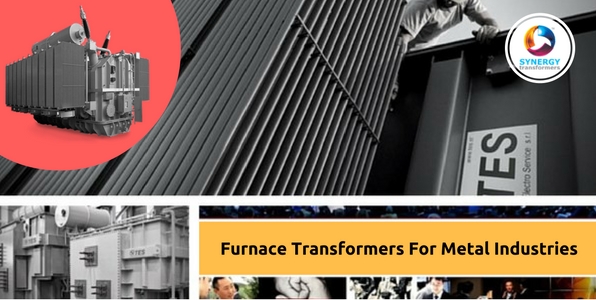Among entire transformers range, furnace transformer vary in design, application, and operation. In this post, suppliers of furnace transformer India will explain some differences and gives some useful recommendations when briefing about furnace transformers.
Furnace transformers are intended for a purpose that is to step down from voltages (11-33kV) to levels of several hundred volts only. This brings massive secondary currents. For such high secondary currents, manufacturers use special bushings to connect to the bus-bars. Bus bars installed in the furnace are mostly cool down by water.
Because of high secondary currents and resistive losses, the furnace design is made to limit the length of the bus-bar. This is why furnace transformers are usually placed near to the furnace itself and if the design is single phase, they are arranged in a triangle around the furnace. This implies that risk of fire is high along with increased temperature. To lower the risk of fire, these furnace transformers are placed in rooms, which adds to the high ambient temperature.
Furnace transformers are widely accepted in production sector. These are specified with large tapping ranges. Manufacturers use plug-in type diverters to lower the downtime in these transformers. This let them to perform a quick changeover of the diverter switch and an overhaul in the foundry with extra time.
Making furnace transformers is expensive process. There is one more factor that makes the production process of furnace transformer costly. That is the step size of the different LV tap voltages and the regulating range, the existence and level of the knee point voltage and the ratio of range to lowest LV voltage. The regulating and the furnace transformer have distinct levels of magnetic flux and are then on separate cores yet in the same tank. An auto connection is preferred for regulating transformer.
Talking about the fittings, manufacturers have unique set of fittings for furnace transformers. There are base mounted wheels, earth bushing, piping, explosion vents, etc. These fittings are intended for certain purposes-
- Base mounted wheels- these components allow multi directional hauling to the transformer.
- Core earth bushing should be enclosed in an oil tight compartment if it is mounted externally. This will lower the risk of fire in the event that lead burns off because of a LV to core fault.
- Explosion vents should be placed on the tank and away from the furnace to prevent fire event.
Rectifier transformers are intended by manufacturing units to supply rectifier bridges for direct current applications like DC arc furnaces.
For more updates on furnace transformer India, you can make online search and find related articles on net. Don’t forget to share your views about this post with other readers.
